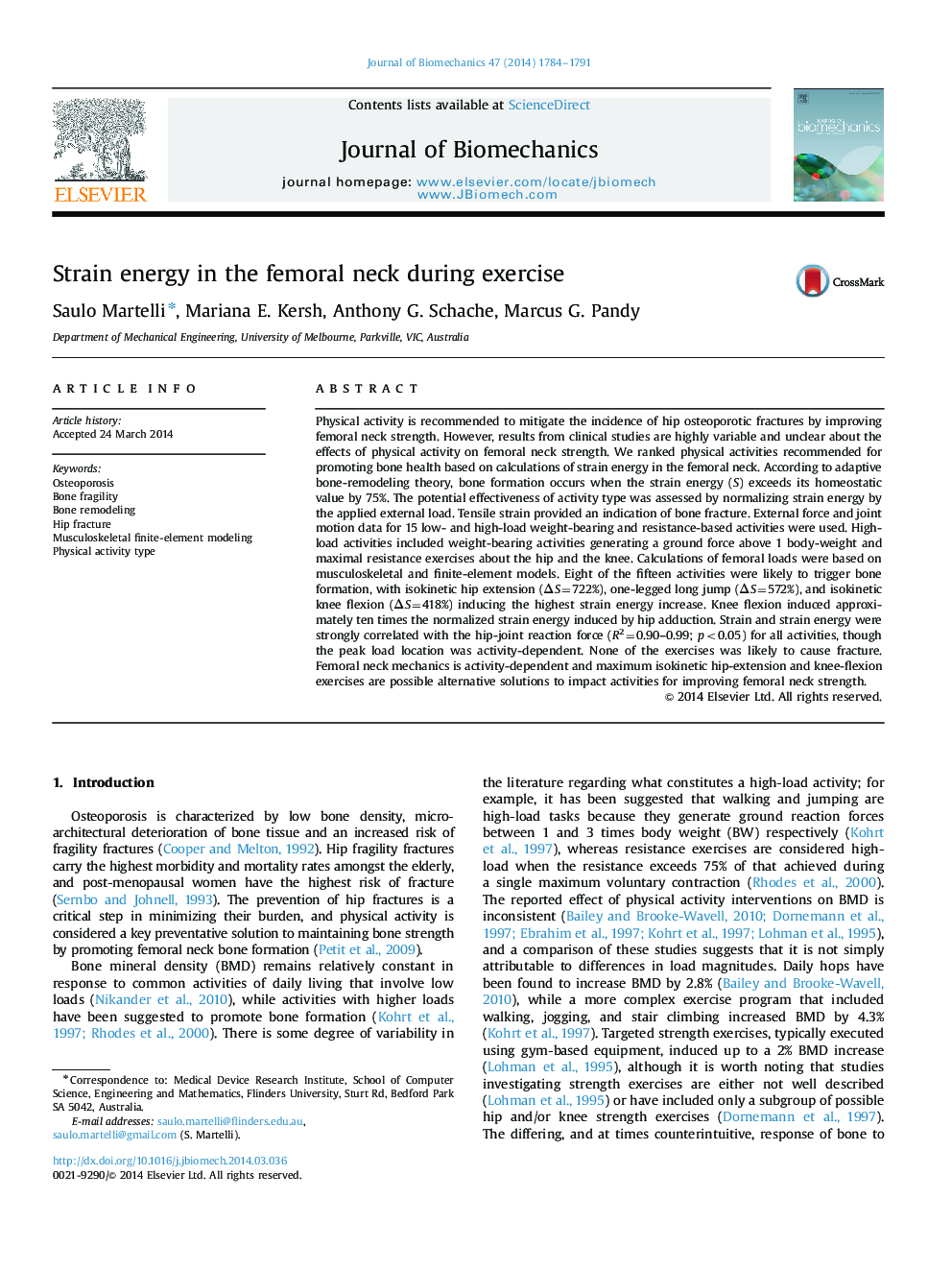| کد مقاله | کد نشریه | سال انتشار | مقاله انگلیسی | نسخه تمام متن |
|---|---|---|---|---|
| 872097 | 910229 | 2014 | 8 صفحه PDF | دانلود رایگان |
Physical activity is recommended to mitigate the incidence of hip osteoporotic fractures by improving femoral neck strength. However, results from clinical studies are highly variable and unclear about the effects of physical activity on femoral neck strength. We ranked physical activities recommended for promoting bone health based on calculations of strain energy in the femoral neck. According to adaptive bone-remodeling theory, bone formation occurs when the strain energy (S) exceeds its homeostatic value by 75%. The potential effectiveness of activity type was assessed by normalizing strain energy by the applied external load. Tensile strain provided an indication of bone fracture. External force and joint motion data for 15 low- and high-load weight-bearing and resistance-based activities were used. High-load activities included weight-bearing activities generating a ground force above 1 body-weight and maximal resistance exercises about the hip and the knee. Calculations of femoral loads were based on musculoskeletal and finite-element models. Eight of the fifteen activities were likely to trigger bone formation, with isokinetic hip extension (ΔS=722%), one-legged long jump (ΔS=572%), and isokinetic knee flexion (ΔS=418%) inducing the highest strain energy increase. Knee flexion induced approximately ten times the normalized strain energy induced by hip adduction. Strain and strain energy were strongly correlated with the hip-joint reaction force (R2=0.90–0.99; p<0.05) for all activities, though the peak load location was activity-dependent. None of the exercises was likely to cause fracture. Femoral neck mechanics is activity-dependent and maximum isokinetic hip-extension and knee-flexion exercises are possible alternative solutions to impact activities for improving femoral neck strength.
Journal: Journal of Biomechanics - Volume 47, Issue 8, 3 June 2014, Pages 1784–1791
